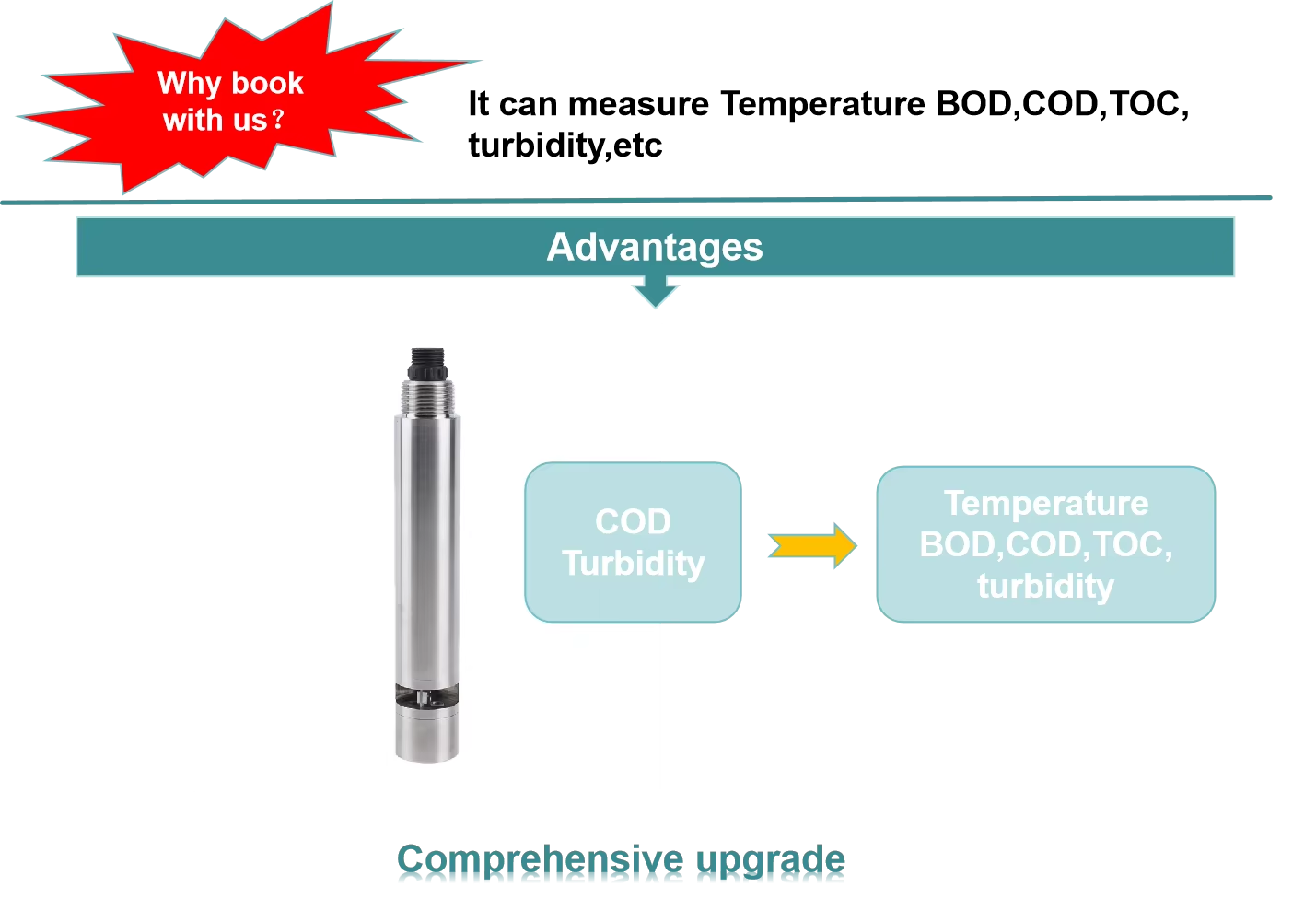1. Background
Water quality monitoring is essential for the protection and management of water resources, especially in rapidly industrializing and urbanizing countries like Vietnam. Due to the increasing discharge of industrial wastewater and agricultural activities, water pollution has become a serious issue, affecting both the ecological environment and public health. Therefore, using advanced water quality monitoring technologies to measure parameters such as turbidity, Chemical Oxygen Demand (COD), Biochemical Oxygen Demand (BOD), and Total Organic Carbon (TOC) in real-time is particularly important.
2. Overview of Stainless Steel Turbidity Water Quality Sensors
Stainless steel turbidity water quality sensors are high-performance instruments capable of quickly and accurately measuring turbidity in water bodies. These sensors are made from stainless steel, offering benefits such as corrosion resistance, high-temperature tolerance, ease of cleaning, and durability, making them suitable for harsh water quality monitoring environments.
3. Application Case
In a water quality monitoring project in Vietnam, an environmental monitoring company deployed stainless steel turbidity water quality sensors across several industrial zones and drinking water sources to achieve comprehensive monitoring of water quality.
-
Location of the Case:
- Industrial parks near Ho Chi Minh City
- Drinking water treatment plants in Hanoi
-
Monitoring Objectives:
- Monitoring the discharge of industrial wastewater
- Ensuring the safety of drinking water sources
-
Implementation Plan:
- Install stainless steel turbidity sensors at wastewater discharge points in industrial parks to monitor turbidity levels in real-time, alongside COD, BOD, and TOC testing, forming a time series of water quality data.
- Set up monitoring stations at drinking water treatment plants to ensure that incoming water sources meet national standards and improve water treatment efficiency.
-
Data Analysis:
- Management personnel can quickly identify abnormal turbidity conditions through the data collected by the stainless steel turbidity sensors and take timely measures to adjust treatment processes.
- Combined with the monitoring results of COD, BOD, and TOC, environmental authorities can accurately assess water quality, identify pollution sources, and formulate response measures.
-
Outcomes:
- Real-time monitoring has enhanced the environmental responsibility of industrial enterprises and effectively reduced their water pollution discharges.
- The safety of drinking water sources has improved, ensuring residents have access to safe drinking water.
- The transparency of data has increased public trust in water quality management.
4. Conclusion
The successful application of stainless steel turbidity water quality sensors in Vietnam has not only improved the efficiency and accuracy of water quality monitoring but has also contributed to the strengthening of water resource management and protection. In the future, as technology advances and application scenarios expand, these sensors will play an important role in more areas, supporting sustainable development. For other countries and regions, Vietnam’s application case provides valuable experience, demonstrating the significant potential of modern water quality monitoring technologies in enhancing water environmental quality.
We can also provide a variety of solutions for
1. Handheld meter for multi-parameter water quality
2. Floating Buoy system for multi-parameter water quality
3. Automatic cleaning brush for multi-parameter water sensor
4. Complete set of servers and software wireless module, supports RS485 GPRS /4g/WIFI/LORA/LORAWAN
Please contact Honde Technology Co., LTD.
Email: info@hondetech.com
Company website: www.hondetechco.com
Tel: +86-15210548582
Post time: Jul-09-2025


